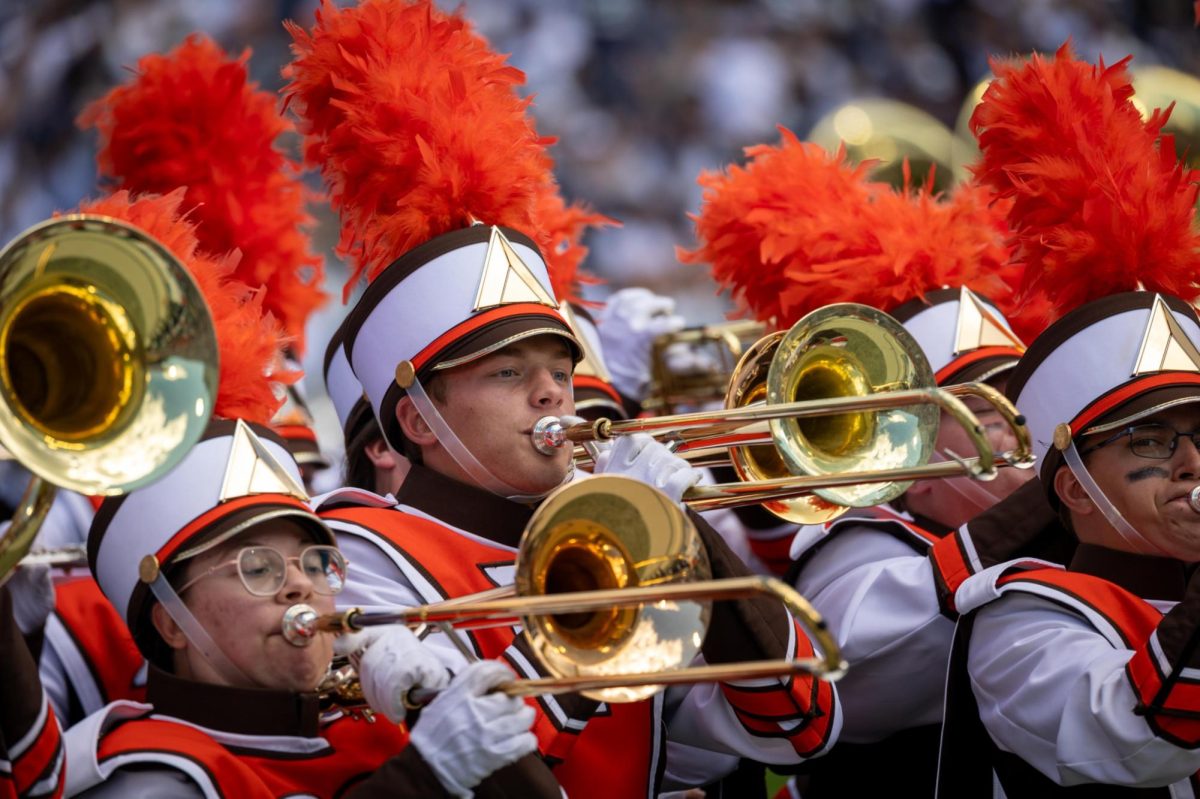If students ever want to know how many hamburgers worth of energy it takes to power a building, a new touch screen in Offenhauer tells them just that.
There is a new interactive touch screen in Offenhauer’s lobby that displays real-time information about the building’s energy usage.
Awareness and understanding of energy uses is an important goal of the installation of the screen, said Sustainability Coordinator Nick Hennessy.
One way to accomplish those goals is to provide a variety of units to convert energy usage. There are typical units like kilowatts and dollars, but students can also see how many hamburgers would be necessary to provide the same amount of energy.
On Sept. 25, Offenhauer used 8,412 kilowatts of electricity, or 14,735 burgers’ worth of energy.
Hennessy said he hopes everyone can find at least one unit that helps them better understand energy usage.
In addition to up-to-the-minute energy usage updates, the screen’s features include Green Tips and Green Features.
Green Tips are “typical things that are going to apply to any campus or even a household” in terms of energy saving, said Hennessy.
Green Features focuses on green or sustainable aspects of the campus, such as LEED-certified buildings and the Green Roof on top of The Oaks.
The screen is one part of the University’s larger goal to become carbon neutral. Hennessy said making energy usage information more easily available will hopefully lead to more informed decisions about energy usage.
The screen also shows information about energy usage in the Union and Olscamp Hall. Screens will soon be placed in those buildings.
The Union uses more energy than Offenhauer (11877 kilowatts on Wednesday).
This is due to cooking, lighting, and the increased heating and cooling needs created by frequent entering and exiting, said Energy Manager Matt Rubel.
Rubel said Olscamp’s power usage (4604 kilowatts on Wednesday) is due to the building’s main energy users being computers and lights, and the lights being LEDs controlled by motion sensors.
Information about these buildings’ energy usage was available online about a year before the installation of the screen. That was good, said Hennessy, but “the screen makes all the difference in terms of exposure and the ability to interact” with the information.
The online energy dashboard was won in a national energy saving contest during this past spring semester. Offenhauer was the residence hall that decreased its energy usage most, so it made the most sense to put the screen there, Hennessy said.
The screens were paid for by the Student Green Initiatives Fund, which students pay $5 per semester into unless they opt out.
Junior Lance Kruse, a member of Net Impact and a resident advisor in Offenhauer, was largely responsible for writing the proposal asking for and explaining the need for the screens.
Residents do notice the screen a lot, Kruse said.
One resident pointed out that the screen itself uses some energy, Kruse said. To limit this usage, it is turned off overnight. The goal is for the educational benefits to outweigh the energy cost, Kruse said.
Hennessy said that computers can be a big source of energy usage. If every student decreased their laptop’s energy usage— for example, by using sleep mode instead of a screensaver— the individual actions could collectively make a big difference.













